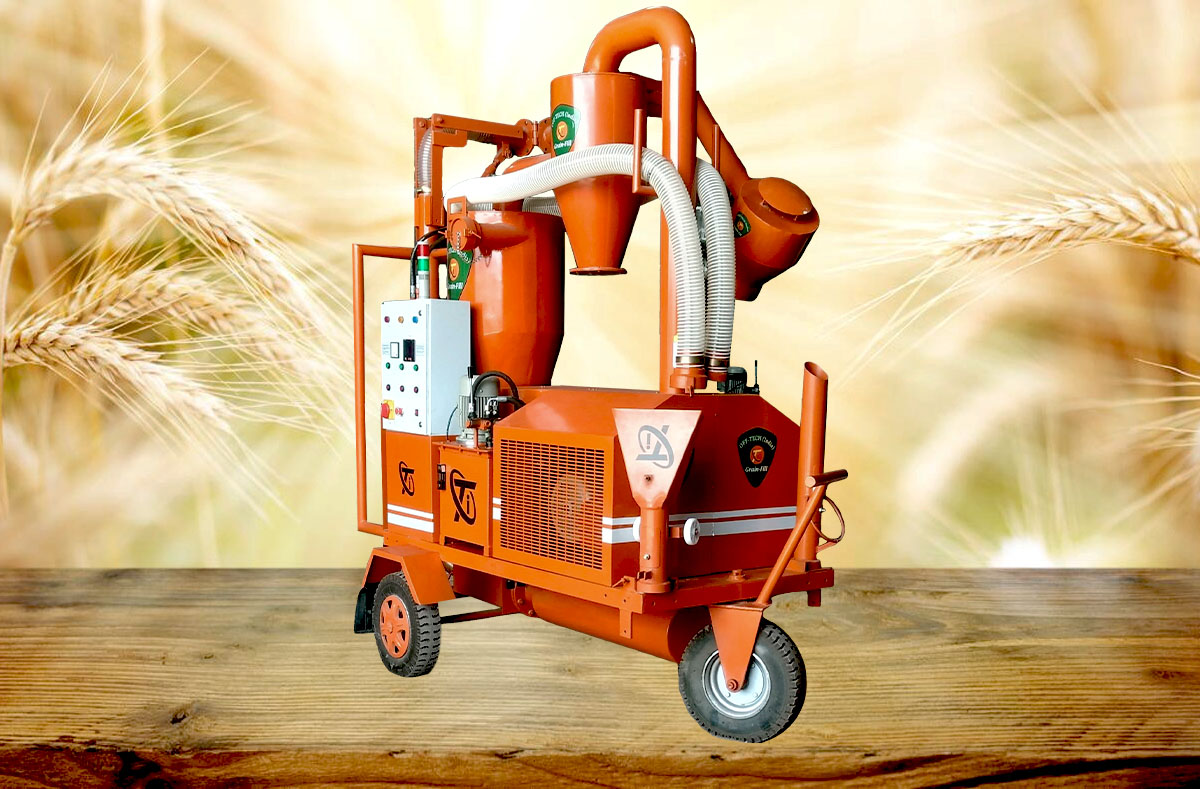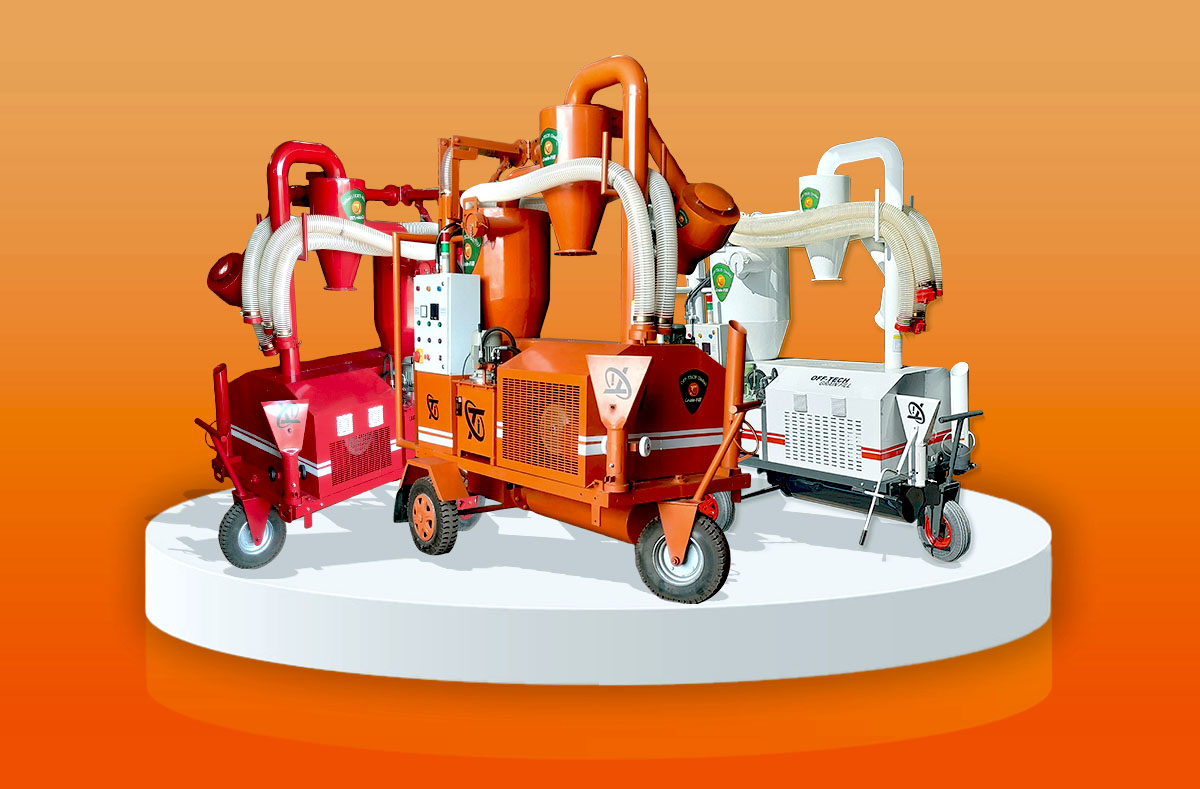How Pneumatic Conveyor is Better than Traditional ways.

Traditional Conveyor
In the world of material handling and industrial processes, traditional conveyors have played a pivotal role for centuries. These mechanical systems have been the backbone of various industries, enabling the efficient movement of goods and materials within factories, warehouses, and production lines. In this blog post, we'll delve into the evolution and significance of traditional conveyors, highlighting their key features, types, and benefits.
Types of Traditional Conveyors :
1. Belt Conveyors:
Perhaps the most recognizable type of conveyor, belt conveyors consist of a continuous loop of material, typically made of rubber, fabric, or metal. These belts are driven by pulleys, enabling the smooth movement of items from one point to another. Belt conveyors are versatile and commonly used in industries like mining, agriculture, and manufacturing.
2. Roller Conveyors:
Roller conveyors utilize a series of rollers to move items. These rollers can be powered or gravity-driven, making them ideal for transporting items of varying sizes and weights. Roller conveyors are often seen in shipping and distribution centers.
3. Chain Conveyors:
Chain conveyors use chains to move items along a path. They are known for their durability and ability to handle heavy loads, making them suitable for industries like automotive and heavy machinery manufacturing.
4. Screw Conveyors:
Screw conveyors consist of a rotating helical screw blade within a tube. As the screw rotates, materials are pushed forward, making them useful for moving bulk materials like grains and powders.
Benefits of Traditional Conveyors:
1. Increased Efficiency:
Traditional conveyors automate the material handling process, reducing the need for manual labor and increasing overall operational efficiency.
2. Cost Savings:
By streamlining processes and reducing labor requirements, conveyors can lead to significant cost savings over time.
3. Versatility:
Different types of conveyors can be customized to suit specific materials, environments, and space constraints, making them adaptable to various industries.
4. Safety Improvements:
Conveyors can help minimize the risk of workplace injuries by reducing the need for manual lifting and carrying heavy items.
5. Consistency:
Conveyors maintain a consistent and controlled flow of materials, minimizing disruptions and bottlenecks in production lines.
Streamlining Material Transport: The Power of Pneumatic Conveyors

Introduction
Pneumatic conveyors are a type of material handling system that uses air pressure to transport bulk materials from one point to another. Unlike traditional mechanical conveyors that rely on belts, chains, or screws, pneumatic conveyors use the flow of air or gas to move materials through a closed pipeline system.
Working Principles
Pneumatic conveyors operate based on two main principles: dilute phase and dense phase conveying.
1. Dilute Phase Conveying:
In dilute phase conveying, materials are suspended in a low-pressure air stream, allowing them to flow like a fluid through the pipeline. This method is suitable for lighter materials and shorter distances.
2. Dense Phase Conveying:
Dense phase conveying involves higher air pressure and lower velocity, causing materials to move in a more condensed state. This method is preferred for heavier materials and longer distances..
Advantages of Pneumatic Conveyors :
1. Gentle Material Handling :
Pneumatic conveyors are known for their gentle handling of materials, making them ideal for delicate or fragile substances that could be damaged by traditional mechanical conveyors.
2. Flexibility :
Pneumatic conveyors can navigate complex routes, including vertical and horizontal turns, allowing for efficient material transport in challenging layouts.
3. Hygienic and Clean :
These conveyors are often used in industries like food processing and pharmaceuticals because they minimize the risk of contamination and are easier to clean compared to other conveyance methods.
4. Reduced Footprint :
Pneumatic conveyors require less space compared to traditional conveyor systems, making them suitable for facilities with limited space.
5. Minimal Downtime:
Pneumatic conveyors have fewer moving parts, reducing the need for extensive maintenance and minimizing downtime.
Applications :
1. Food and Beverage :
Transporting ingredients, powders, and granules in a hygienic manner.
2. Chemical and Pharmaceutical :
Handling potentially hazardous materials and maintaining product purity.
3. Plastics and Rubber :
Moving plastic pellets, powders, and granulated materials for processing.
4. Mining and Minerals :
Transporting bulk minerals, ores, and other materials within mining operations.
5. Agriculture :
Conveying grains, seeds, and fertilizers efficiently.
5. Packaging :
Transferring materials to packaging lines for efficient packaging processes.
differences between Traditional conveyor or Pneumatic conveyor
Traditional conveying and pneumatic conveying are two different methods used to transport materials from one location to another within industrial processes. They have distinct differences in terms of mechanism, efficiency, applications, and advantages. Here's a comparison between the two:
Transport Mechanism
1. Traditional Conveying :
This method involves the use of mechanical systems such as belts, screws, buckets, or vibrating trays to move materials. The materials are physically transported along a fixed path using these mechanical components.
2. Pneumatic Conveying :
Pneumatic conveying, on the other hand, uses air or other gases to transport materials. Materials are suspended in an air stream and moved through pipes or ducts by creating a pressure differential.
Conveyed Material
1. Traditional Conveying :
Traditional conveying methods are often used for granular or solid materials such as grains, powders, and bulk solids.
2. Pneumatic Conveying :
Pneumatic Conveying: Pneumatic conveying is suitable for a wide range of materials, including powders, granules, and even liquids. It can handle materials with a high degree of fluidization and is particularly useful for abrasive or fragile materials.
Distance and Route
1. Traditional Conveying :
Traditional conveyors are typically used for shorter distances and straightforward routes. They are well-suited for point-to-point transportation within a facility.
2. Pneumatic Conveying :
Pneumatic conveying is highly flexible and can transport materials over longer distances and complex routes. It is often used for conveying materials between different process stages or across large facilities.
Speed and Capacity
1. Traditional Conveying :
Traditional conveying systems can have high capacity and can handle heavy loads, making them suitable for applications where large quantities of materials need to be transported.
2. Pneumatic Conveying :
Pneumatic conveying systems are generally capable of high-speed transport and can cover long distances horizontally and vertically. However, their capacity might be somewhat lower compared to certain traditional conveying methods.
Advantages
1. Traditional Conveying :
This method is generally simpler in terms of equipment and maintenance. It can be cost-effective for shorter distances and robust materials.
2. Pneumatic Conveying :
Pneumatic conveying offers more flexibility in terms of route and direction. It can navigate around obstacles and tight spaces more easily. It's also better for delicate materials as it minimizes the risk of damage during transportation.